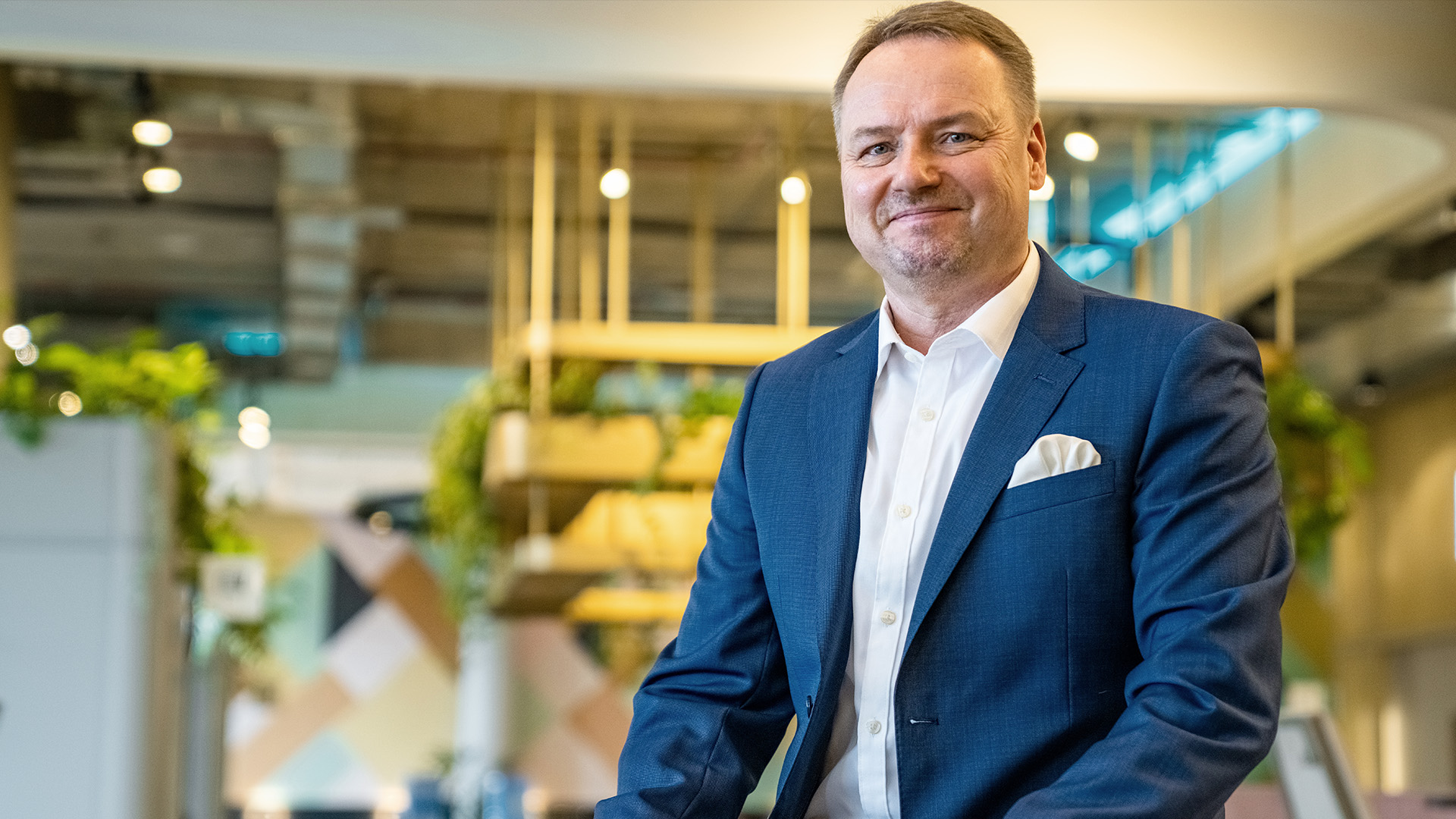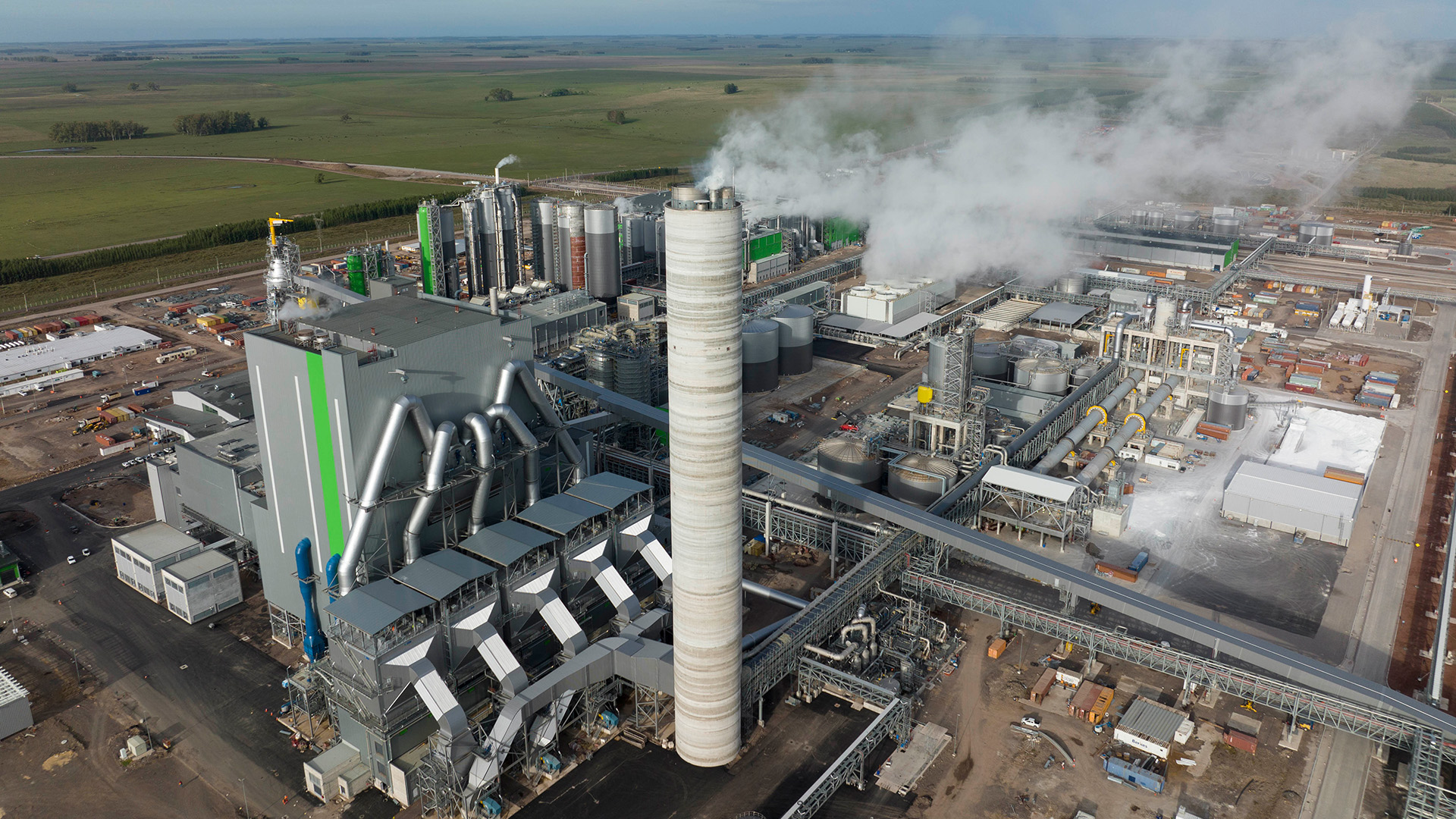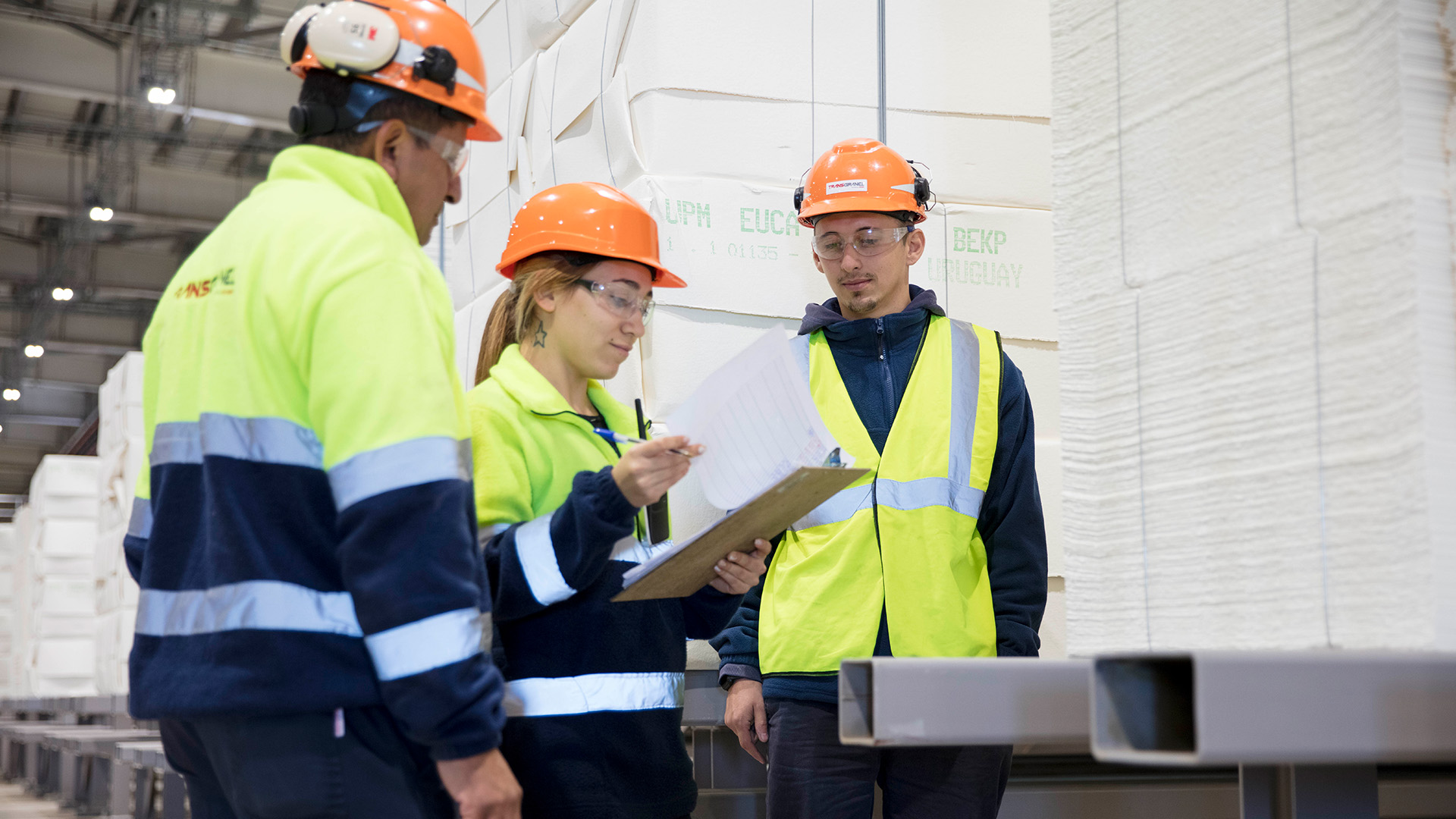At the end of May 2023 a historic chapter has just concluded. The largest ever investment in the history of UPM, the Finnish forest industry, and Uruguay, has culminated in the start-up of the new UPM Paso de los Toros pulp mill. As Petri Hakanen, SVP of UPM’s Uruguay Development Project states, even though similar mills are being constructed around the world, this is a unique, transformative step for UPM, since the company’s pulp business will grow by almost 60%.
“Also, I would like to correct the misconception that this project has simply been about building a new mill. It is, of course, true that we have constructed the world’s largest single line pulp mill in central Uruguay, but this has in fact been a project to develop a new concept based on an existing platform, our eucalyptus plantations and the Fray Bentos mill,” Hakanen points out.
Besides the 2.1 million tonne greenfield eucalyptus pulp mill, the project has included building a pulp terminal in the port of Montevideo, as well as local infrastructure and facilities such as roads and housing. The total investment adds up to USD 3.47 billion.

Hakanen has invested a lengthy period of his life in the project. For the past four-and-a-half years he has been located on site in Uruguay – and considers the experience a once in a lifetime opportunity.
“Naturally, none of this would have been possible without the commitment of an excellent team and a large group of professionals. Funnily enough, I think I once professed in an internal meeting that I’m not really a project person, as my previous experience is mainly from running business and operations. So I’ve definitely stepped out of my comfort zone and gone through a personal development project,” he laughs.
Private-public partnership
According to Hakanen, the Paso de los Toros project can be divided into four phases. The first of these concluded in signing the investment agreement in November 2017. Shortly after, he was appointed to head the project. The investment agreement outlined the necessary prerequisites for UPM’s investment decision and the Uruguayan government’s criteria for balanced development of logistics, environment and employment in the country’s inland.
“Something that is notable about this project is the way we have worked in cooperation with the government and public authorities from the very beginning. I consider this to be a good example of a successful collaboration between the private and public sector. When the scope of a project covers several decades, it’s even more important that the fundamentals are carefully thought out and the objective is clear.”
Next, a roadmap was drawn up for implementing the investment agreement. In practice, both parties committed to certain actions in order to make the investment decision possible. For example, the government agreed to renew the country’s central railroad, enabling a direct rail connection from mill to port.
“In July 2019 we reached a point where the roadmap had been implemented and we were able to go forward with the investment decision. Immediately after that we launched the third phase and began construction work on the mill, pulp terminal and all related operations,” Hakanen says.

Perseverance in exceptional times
Then, in the spring of 2020 – just when the project was getting up to speed and the organisation was ramping up – the COVID-19 pandemic struck like a bolt from the blue. However, thanks to prompt and consistent national restrictions and strict protocols at construction sites, the project continued with relatively minor complications.
“The pandemic proved to be quite a test for a project where thousands of people are working simultaneously in a restricted area. At worst, 20% of the workforce were in quarantine, which naturally caused challenges. However, with the help of systematic and analytic planning, we managed to keep the works running.”
As a consequence of the pandemic, unprecedented logistical challenges caused major delays and shortages of supplies. This required a lot of extra planning and adjusting schedules especially for a project that is so dependent on deliveries of equipment from all around the world. And the most recent development – Russia’s war of aggression in Ukraine – has naturally also had a knock-on effect on the project through impacts on the global economy.
“However, we were able to adapt to the situation and create new operating models. I’ve previously compared the pandemic to hiking with a backpack weighing 30 kilos. Once you can take that extra weight off, hiking and working is much easier. All in all, I would say we made it through this project with a combination of Finnish Sisu and Uruguayan positivity,” Hakanen says, referring to the special brand of perseverance that is often considered an inseparable part of the national identity of Finns.
Positive local reception
Looking back at the most memorable highlights and lessons learned along the way, Hakanen continues on the topic of logistical challenges. Since Paso de los Toros is located in the centre of the country, all large scale cargo and pieces of equipment were first delivered via waterway to Fray Bentos, where they were loaded into trucks.
“The overweight transport required building several temporary bridges, new roads and bypasses, and moving power lines. Also, we had to set up a new ferry connection for taking heavy deliveries across to the southern bank of the Rio Negro River.”
Hakanen says that heading a project is very much about issue management and problem-solving. As opposed to leading business operations, where certain changes in the operating environment can be favourable, projects typically deal with constant headwinds and minimising setbacks. Still, he considers learning new things and finding creative solutions as one of the best parts of the job.
“One thing we have learned is the importance of communicating actively and transparently with the surrounding community and society, both locally and on a national level. We have arranged over 30 information sessions to keep the community updated on activities on the mill site and how the project is progressing. The response has been very positive and, according to our frequent surveys, the public perception has become even more positive along the way.”

Commitment and teamwork
The current, fourth, phase of the project involves ramping up the operations of the mill. The entire process is made up of numerous sub-processes, as production capacity is gradually increased step by step towards the full nominal capacity. Starting up a pulp mill isn’t simply a case of pushing a button and pressing a pedal.
In the closing press conference for the project, Hakanen commented that besides the actual start-up date of the mill, “This is the day I have most been looking forward to”. He admits feeling pleased and relieved that the long and eventful project is finally coming to an end.
“Something that has made a huge impression on me are the brilliant people we have – I’ve witnessed individuals really putting themselves on the line and building up their know-how in the process. It’s been inspiring to see how even people who haven’t previously worked together are able to form close-knit teams with a clear focus and can-do attitude,” Hakanen praises the team, noting that at the height of the project, up to 7,500 people – representing as many as 60 nationalities – were working on the mill site.

Onwards and upwards
The one thing Hakanen regrets is not having the time to become fluent in the Spanish language during his stay.
“I suppose you can’t have it all,” he smiles, adding that he is, however, one of the rare cases to have been granted a permanent residence permit in the country, due to his extended visit.
What comes next for him career-wise is yet to be revealed. Perhaps another mega-sized project now that he’s developed a taste for it?
“With the ending of this project, one door is closed for me personally, while perhaps another one opens. From a professional perspective, I’m lucky to have had this experience and gain an extensive network of new colleagues and friends. This is also the beginning of a new chapter for the local organisation that will take care of running the entire platform during normal operation from now on. I’m confident they will continue to do a great job,” Hakanen concludes.
Text: Timo Nykänen
